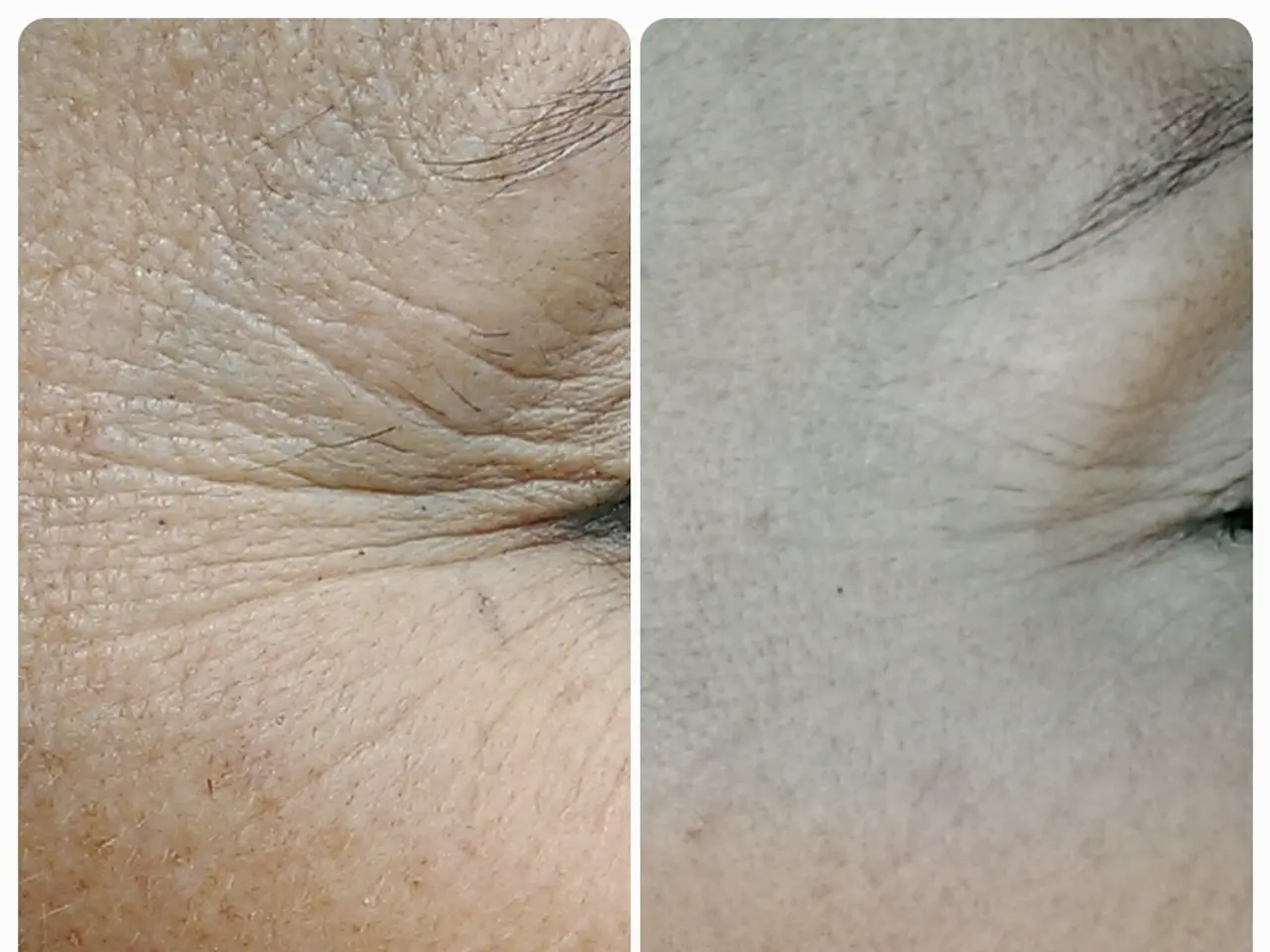Melanoma with a broad, surface spread: Indications, causes, remedies
Superficial Spreading Melanoma (SSM) is the most common subtype of melanoma, accounting for about 70% of cases. This type of skin cancer typically arises from an existing mole that changes in appearance. SSM can be highly curable if diagnosed early enough, but it can be serious as it has the ability to spread to other body parts.
Potential Causes and Risk Factors
SSM is primarily caused by DNA damage in melanocytes due to ultraviolet (UV) radiation exposure from the sun or tanning beds. Other risk factors include genetics, skin and physical traits, immune status, age and sex, and other skin conditions.
- UV Radiation: Intense, intermittent sun exposure and history of severe sunburns, especially in childhood or adolescence, are major causes.
- Genetics: Inherited gene mutations such as in MC1R and CDKN2A increase risk. Family history of melanoma also significantly raises risk.
- Skin and Physical Traits: Light skin that burns easily, red or blond hair, blue or green eyes, and the presence of many or atypical moles increase susceptibility.
- Immune Status: A weakened immune system (e.g., HIV, immunosuppressive drugs) elevates risk.
- Age and Sex: Risk increases with age; females under 50 have slightly higher risk than males, but males have greater risk after age 50.
- Other Skin Conditions: Prior skin cancers or certain genetic disorders, like xeroderma pigmentosum, also elevate melanoma risk.
Treatment Options
The primary treatment for SSM involves surgical removal of the tumor with margins to ensure complete excision. Other treatment options may include sentinel lymph node biopsy, adjuvant therapies such as immunotherapy, targeted therapies, radiation, or chemotherapy, and regular monitoring post-treatment to detect recurrence or new melanomas.
Possible Prevention Measures
Preventing SSM focuses on minimizing UV exposure and monitoring skin changes meticulously.
- UV Protection: Avoid excessive exposure to UV radiation by using broad-spectrum sunscreen, wearing protective clothing, hats, sunglasses, and seeking shade especially during peak sun hours.
- Avoid Tanning Beds: These pose a high risk for developing melanoma.
- Early Detection: Regular skin self-exams and dermatologist visits to identify suspicious moles or skin changes early.
- Sunburn Prevention: Particularly in childhood, since severe sunburns increase melanoma risk later in life.
- Genetic Counseling: For those with strong family history or genetic predispositions, counseling can guide appropriate preventive steps.
In summary, SSM is primarily driven by UV-induced DNA damage complemented by genetic and phenotypic risk factors. Early surgical treatment has high cure rates, and prevention focuses on minimizing UV exposure and monitoring skin changes meticulously.
The outlook for a person with SSM depends on several factors, including the stage of the cancer, the overall health of the individual, and the effectiveness of treatments. In 2023, doctors are expected to diagnose approximately 100,350 new cases of melanomas in the United States. Symptoms of SSM can include a growing spot, a dome-shaped growth that is firm, and changes in the color, shape, or size of a spot or mole. Possible complications of SSM include secondary infection, scarring, lymphedema, local recurrence, and metastases. The 5-year relative survival rate for people with a SSM diagnosis between 2010 and 2015 was 89.7%. A doctor can diagnose SSM with a biopsy and advise on suitable treatments, which can include surgery, chemotherapy, radiation therapy, and more.
- The presence of many or atypical moles could indicate an increased susceptibility to developing Superficial Spreading Melanoma (SSM), a type of skin cancer.
- Early detection of SSM, through regular skin self-exams or dermatologist visits, is crucial for high curability rates, as it can lead to surgical removal of the tumor.
- Regular monitoring of skin changes and the implementation of preventive measures, such as protecting against UV radiation and avoiding tanning beds, can help minimize the risk of developing SSM and other skin cancers.




